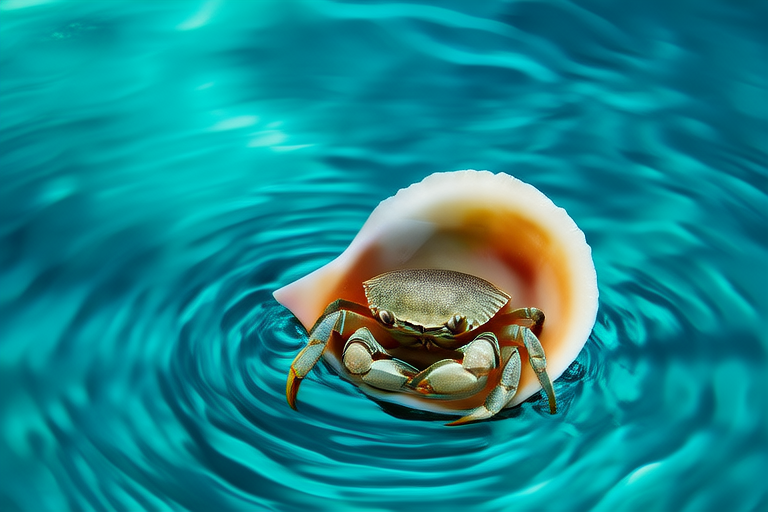The Fascinating Life of Pea Crabs: Surviving Through Symbiosis
Introduction to Pea Crabs:
Pea crabs, belonging to the family Pinnotheridae, are tiny crustaceans, typically measuring less than half an inch in length. Their diminutive size and delicate appearance make them easily overlooked, yet their lives are far from simple. These crabs are primarily found in coastal waters and estuaries, thriving in the intricate marine environments that offer both protection and sustenance.
The Concept of Symbiosis:
Symbiosis, derived from the Greek words ‘sym’ (together) and ‘bios’ (life), refers to close and long-term interactions between different biological species. These interactions can be mutually beneficial, harmful, or neutral. In the case of pea crabs, their symbiotic relationship with their hosts is a prime example of mutualism, where both species benefit from the association. This unique partnership has allowed pea crabs to adapt and thrive in challenging marine environments.
Host Species and Mutual Benefits:
Pea crabs have a variety of hosts, with bivalves like oysters, clams, and mussels being the most common. The crabs reside inside the mantle cavity of these bivalves, protected from predators and harsh environmental conditions. In return, the pea crabs consume the bivalve’s tissue, which might otherwise be a waste product. This feeding behavior does not significantly harm the host, as the crabs target only a small portion of the bivalve’s body, ensuring the host remains healthy.
For the pea crabs, the symbiotic relationship provides shelter and a steady food supply, reducing the need for them to expend energy searching for food and avoiding predators. For the bivalves, the presence of pea crabs can enhance water filtration, which aids in the bivalve’s respiration and feeding processes. This mutualistic relationship exemplifies the intricate balance of marine ecosystems.
Lifecycle and Mating Habits:
The lifecycle of pea crabs begins when the female releases her eggs into the water. After hatching, the larvae undergo several stages of development before settling onto a suitable host. Once settled, the young pea crab begins to feed on the host’s tissue, gradually growing larger until it reaches maturity. Mating typically occurs within the safety of the host, minimizing the risk of predation. Male pea crabs often compete for access to females, with successful males fertilizing the eggs internally.
Offspring care in pea crabs is minimal compared to many other species. The female carries the fertilized eggs until they hatch, after which the larvae fend for themselves. This strategy ensures that even if the parent dies, the offspring still have a chance at survival, given the vast number of potential hosts in their environment.
Ecological Importance and Conservation:
The study of pea crabs and their symbiotic relationships is crucial for understanding broader ecological systems. By examining these interactions, scientists gain insights into the complex dynamics of marine life, which can inform conservation efforts. Protecting the habitats of pea crabs and their hosts is essential for maintaining the health of marine ecosystems.
Understanding the role of symbiosis in marine biodiversity helps us appreciate the interconnectedness of life in our oceans. It also highlights the importance of preserving diverse habitats that support such intricate relationships. As human activities increasingly impact marine environments, it becomes more critical to study and protect these ecosystems.
Call to Action:
We encourage readers to delve deeper into the fascinating world of marine biodiversity. Visit your local aquarium or marine biology center to learn more about the creatures that inhabit our oceans. Join community clean-up events to help protect marine habitats. Support organizations dedicated to marine conservation through donations or volunteer work. By taking these actions, you contribute to the preservation of marine ecosystems and the countless species that call them home.
Together, we can ensure that future generations have the opportunity to explore and appreciate the wonders of the ocean, just as we do today.
